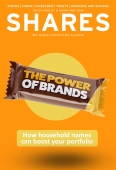Archived article
Please note that tax, investment, pension and ISA rules can change and the information and any views contained in this article may now be inaccurate.
Should the Federal Reserve lower interest rates next month?

No doubt as Fed chair Jerome Powell heads for Jackson Hole, Wyoming, to deliver his annual speech on 22 August, the White House will be back on its favourite hobby horse ramping up calls for the central bank to cut interest rates when it meets in September.
The question is, does the US economy actually need lower rates at this particular point in time?
Increasingly, the answer looks like no because the current picture and the short-term outlook are clouded by the effect of president Trump’s tariffs on a range of important data.
Take GDP, or gross domestic product, the broadest measure of economic growth.
In the first quarter, imports soared as companies stocked up to avoid paying tariffs, so the domestic side of GDP shrank, and the US economy contracted by 0.5% compared with the previous quarter.
In the second quarter, however, economic growth was 3% higher than the first quarter, or roughly the same rate of growth as the second and third quarters of 2024.
Consumer spending, which makes up more than two-thirds of US GDP, was unusually weak in the first quarter, which is seasonally weak anyway, but growth in the fourth quarter of 2024 had been unusually strong at 4%.
Plus, spending recovered in the second quarter, and consumer sentiment surveys suggest people are still reasonably upbeat about the economy (although Republicans tend to be more bullish and Democrats more bearish).
On these broad measures, there would seem to be no need to cut interest rates.
Inflation, which is central to the Fed’s mandate, increased from 2.4% on an annual basis in May to 2.7% in June, but has yet to show the full effect of tariffs for two reasons.
First, many of the most-affected products are big-ticket items which people don’t buy every day, so the data isn’t coming through, and second, so far US companies have ‘eaten’ most of the increase in prices (leading to a surge in wholesale prices).
However, that is likely to change in the second half of the year with analysts at Goldman Sachs predicting consumers will end up paying 70% of the increase.
Where inflation is showing up already is in high-frequency purchases such as food, but core inflation – which is food and energy – is being kept down by low petrol prices which are subdued to low oil prices.
In deciding whether or not to lower rates, the Fed has to weigh up all these factors, and even though the market seems convinced it will cut by 0.25%, for better or worse, we suspect Jerome Powell will stick to his mantra of being ‘led by the data’.
Important information:
These articles are provided by Shares magazine which is published by AJ Bell Media, a part of AJ Bell. Shares is not written by AJ Bell.
Shares is provided for your general information and use and is not a personal recommendation to invest. It is not intended to be relied upon by you in making or not making any investment decisions. The investments referred to in these articles will not be suitable for all investors. If in doubt please seek appropriate independent financial advice.
Investors acting on the information in these articles do so at their own risk and AJ Bell Media and its staff do not accept liability for losses suffered by investors as a result of their investment decisions.
 magazine
magazine








